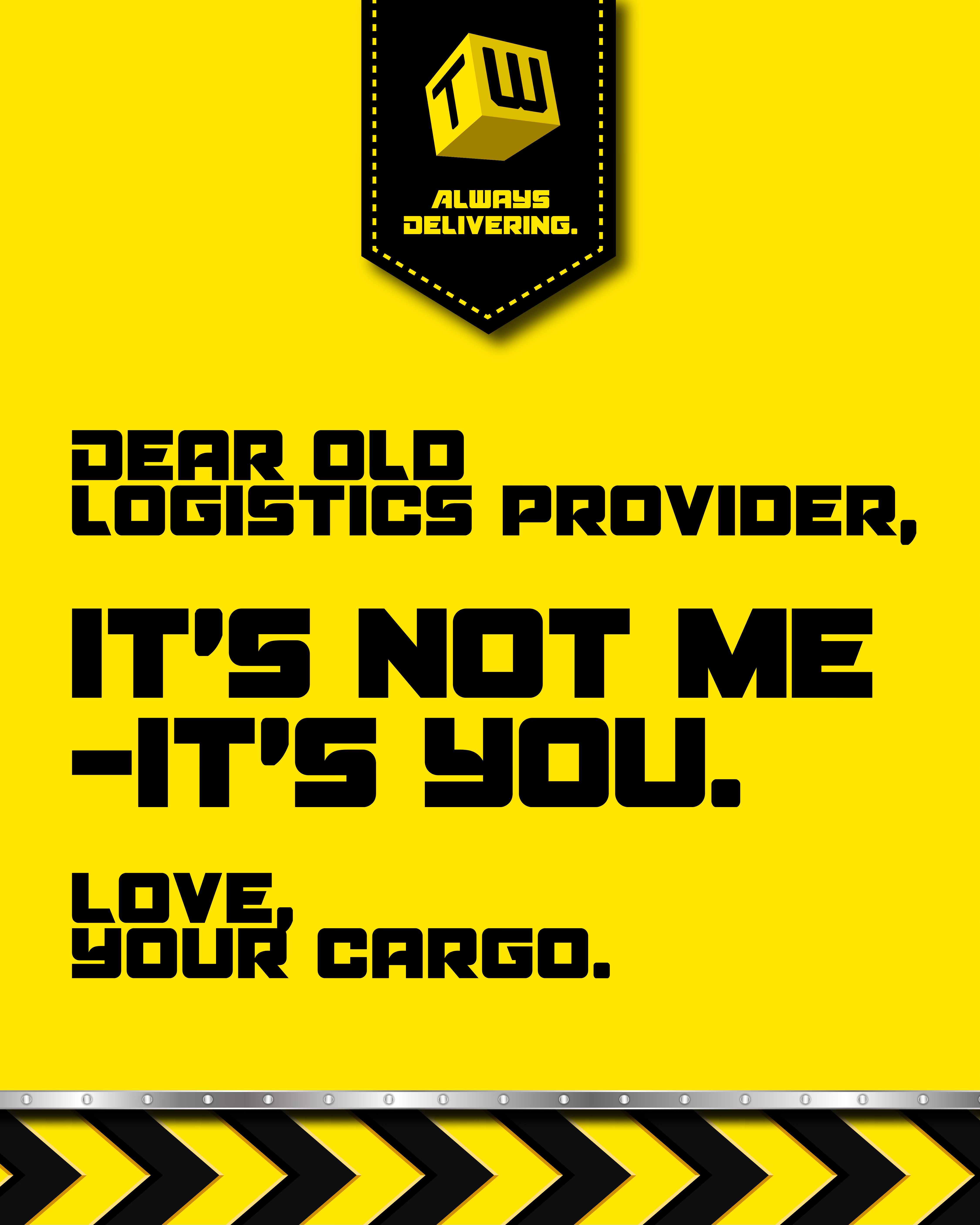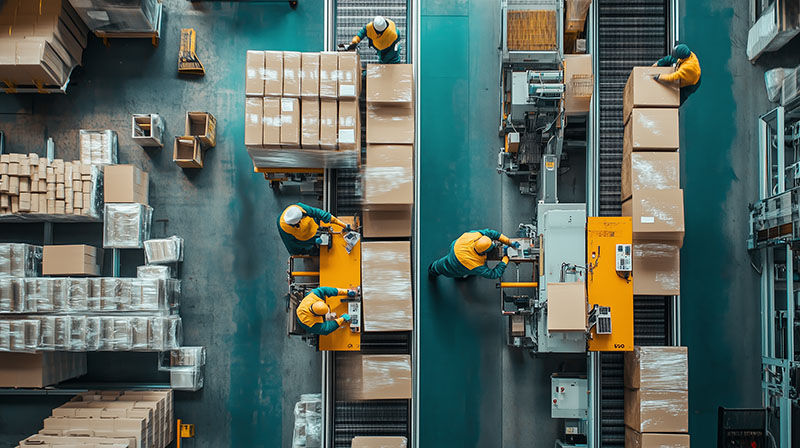What is Logistics? More Than Just Trucks and Warehouses
- Danyul Gleeson

- Aug 27
- 6 min read
Logistics. It’s a word that gets thrown around a lot, but ask ten people what it actually means, and you’ll probably get ten different answers.
Some think it’s just shipping and trucking, others picture huge warehouses stacked to the ceiling with boxes, and a few might even imagine some poor soul staring at a screen, desperately trying to figure out why their cargo is stuck in customs.
But here’s the truth: Logistics is the reason everything in your life shows up where it’s supposed to, when it’s supposed to. It’s the invisible engine that keeps businesses running, shelves stocked, and your online orders from turning into a six-week nightmare of “Your package is delayed” emails.
So let’s break it down. What is logistics really, and why does it matter more than ever?

Logistics: The Backbone of... Well, Everything
At its core, logistics is all about movement - moving goods, moving information, and moving money in the most efficient, cost-effective, and reliable way possible. It’s about planning, coordinating, and making sure everything flows seamlessly from start to finish.
Sounds simple? It’s not. Behind every “out for delivery” notification, there’s an intricate web of transportation, warehousing, inventory management, and problem-solving that would make even the best chess players sweat.
Without logistics, factories shut down, grocery store shelves go empty, and businesses grind to a halt. In other words, it’s kind of a big deal.
What’s Actually Involved in Logistics?
1. Transportation: Moving Stuff From A to B (Without Losing It Along the Way)
This is the part of logistics everyone thinks they understand - the planes, trains, ships, and trucks that move goods across the globe. But transportation isn’t just about getting from point A to point B; it’s about doing it faster, cheaper, and with the least amount of waste.
Road Freight: Trucks for short-haul and long-haul deliveries. They’re flexible, but fuel costs and traffic can be a nightmare.
Rail Freight: A more sustainable option, great for bulk shipments, but slower than road transport.
Ocean Freight: The backbone of international trade - cheaper but notorious for delays. (Ever heard of the phrase “stuck at the port”?)
Air Freight: The fastest way to move goods but also the most expensive - great for high-value, time-sensitive shipments.
If logistics is a giant puzzle, transportation is the piece that keeps moving while you’re trying to fit the others in place.
2. Warehousing & Distribution: Where It All Comes Together (Or Falls Apart)
Think of warehouses as temporary parking lots for your products. They’re where shipments land before they’re sorted, packed, and sent to their final destinations.
But here’s where things get tricky - holding too much stock ties up capital and takes up space, while holding too little means you’re out of stock when demand spikes. Logistics is about striking the perfect balance.
Modern warehouses aren’t just giant storage units anymore. They’re AI-powered, robotics-driven hubs designed to move products as quickly and efficiently as possible. Some even use drones and automated picking systems to speed things up - because apparently, the future is now.
3. Inventory Management: Keeping the Right Stuff in the Right Place at the Right Time
Ever walk into a store and wonder why they never have what you need - but somehow always have too much of what nobody wants? That’s poor inventory management.
Good logistics makes sure businesses never have too much or too little stock by:
Forecasting demand so they can prepare for peak seasons.
Optimising storage so products don’t sit in warehouses collecting dust.
Minimising waste (especially in industries like food and pharmaceuticals where spoilage is a huge issue).
Fun fact: Poor inventory management costs businesses billions of dollars every year. Yep, billions - as in, money they might as well be throwing into a furnace.
4. Order Fulfillment & Last-Mile Delivery: The Final Boss of Logistics
Everything can run smoothly up until this point, but if the last mile fails, customers don’t care how perfect your supply chain was before that.
E-commerce has completely changed the game. Customers expect next-day, same-day, or even one-hour delivery. If that doesn’t happen, they’ll take their money elsewhere.
Last-mile delivery is the most expensive and complicated part of logistics. Urban congestion, missed deliveries, and inefficient routing all cost companies millions.
Solutions? AI-driven route optimisation, micro-fulfillment centers in cities, and even drones and autonomous delivery vehicles. (Because why not?)
5. Reverse Logistics: Returns, Recycling, and the Afterlife of a Product
What happens after a product reaches a customer? Sometimes, it comes right back.
Returns are a massive logistical headache, but smart companies turn reverse logistics into a competitive advantage by:
Refurbishing and reselling returned products instead of trashing them.
Recycling materials to reduce waste and lower costs.
Using AI to predict returns and prevent overproduction.
The best logistics companies don’t just think about moving products forward - they also consider what happens when they need to come back.
So Why Does Logistics Matter?
Because without it, modern life as we know it would fall apart.
No logistics? No fresh food on supermarket shelves.
No logistics? Factories would shut down because raw materials wouldn’t arrive.
No logistics? E-commerce wouldn’t exist.
No logistics? Forget about getting that birthday present delivered on time.
Logistics is what makes global commerce, trade, and everyday conveniences possible. And as technology evolves, the supply chain is only getting faster, smarter, and more efficient.
Whether you’re a business owner, a consumer, or someone who just appreciates having coffee stocked at your local café, logistics plays a massive role in your daily life.
And now, you actually know what it means.
FAQS
How does logistics differ from overall supply chain management in practice?
Think of supply chain management as the big boss - the one juggling every moving part from sourcing raw materials to getting the product on your doorstep. Logistics? That’s the street-level legend making it actually happen.
Logistics is the engine room. It deals with:
Transporting stuff
Storing stuff
Tracking stuff
Delivering stuff...without setting the building on fire.
Supply chain = strategy. Logistics = execution.One dreams, the other drives.
What are the main activities involved in logistics planning and execution?
If logistics were a movie, planning is the script, and execution is the chaotic, caffeine-fuelled shoot.
Here’s what happens on both sides:
Planning:
Choosing transport modes (truck, rail, spaceship... we don’t judge)
Building warehouse layouts
Forecasting demand
Designing fulfilment flows
Budgeting and carrier contracts
Execution:
Receiving goods
Storing them like Tetris pros
Picking and packing
Shipping to the right place at the right time
Tracking everything and fixing it when Steve forgets to scan
It’s equal parts strategy, operations, and disaster avoidance.
Why is logistics crucial for delivering goods on time and at the right price?
Because without good logistics, your “2-day delivery” turns into “lost in a depot somewhere outside Wagga.”
Logistics is what keeps your promises real. It:
Reduces delays through smart routing
Lowers costs by consolidating shipments
Increases efficiency through automation and accurate inventory
Prevents expensive mistakes like double shipping or lost stock
It’s the reason customers smile when they get their order... and why your CFO doesn’t sob into the budget sheet every month.
How do inbound and outbound logistics coordinate within a supply chain?
Inbound brings the goods to you - raw materials, components, all the behind-the-scenes bits. Outbound gets the final product to your customer.
If your inbound is slow, your production stalls.If your outbound fails, your customers vanish.
Good logistics coordinates both like a supply chain DJ - syncing deliveries, avoiding bottlenecks, and keeping everything moving like a warehouse dance party (minus the music, plus a lot more forklifts).
When they flow together, you don’t just move product - you move profit.
What role does logistics play in enhancing customer satisfaction?
Everything. Literally everything.
Logistics is the last mile, the first impression, the apology email, and the tracking link.
It’s the reason your customer thinks:
“Wow, that was fast.”
“Hey, it arrived in perfect condition.”
“They even nailed the delivery window.”
From seamless returns to real-time tracking and on-time delivery, logistics is what turns one-time buyers into lifelong fans.
Do it well, and customers don’t just come back - they bring friends.
Insights from Danyul Gleeson, Founder & Chaos Tamer-in-Chief at Transport Works
Danyul has been in the trenches - warehouses where pick paths were sketched on pizza boxes and boardrooms where the “supply chain strategy” was a shrug. He built Transport Works to flip that script: a 4PL that turns broken systems into competitive advantage. His mission? Always Delivering - without the chaos.





Comments